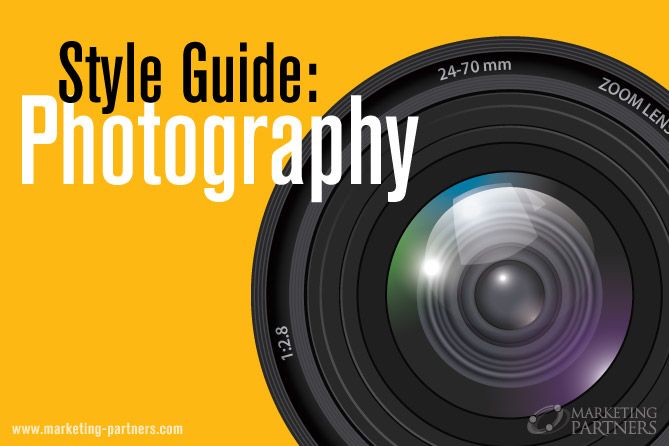How to Use Your Core Values to Inspire, Retain, and Energize Your Team
For the last few decades, but especially so in recent years, people are seeking out more than just an income from their place of employment. More...
5 min read
 Brad Pettengill
:
3/24/16 10:00 AM
Brad Pettengill
:
3/24/16 10:00 AM


You're considering an image for your upcoming campaign, but you have an uneasy feeling about its content, tone and style. Perhaps establishing guidelines for creation of new images didn't seem that important for a public sector agency, but now you have more and more calls for images, in a variety of contexts, social media, print advertising, website sliders, etc. You're starting to see the importance of consistency in feel, color, subject matter in your communication, so let’s fall back, regroup and establish photo style guidelines that tell your story, support your mission, and save you time as you move forward.
 Ask yourself, “what is our personality?” If you were in a company and its product, service or idea is optimistic, vibrant, lighthearted, then you understand your images need to evoke that feeling, mood or vibe. Every mood or emotion can be conveyed with imagery, and there are many ways to do this. For example, lighting can be very shadowy, stark and dramatic, or very fun and bright and exciting. Photos can depict a lot of action, or can be calm and reserved. Color use can dramatically affect the mood of a photo—is your story bright and lively, edgy and high-contrast, or is it more suited to calm, muted tones in a relaxing palette? Composition, depth of field, selective focus can also affect mood through directing the viewer to a point of attention or downplaying unnecessary details. Photo styles affect perception—a gritty, black and white candid photojournalistic style sends a completely different message than a posed, luxuriously lit portrait with impeccable background details and palette. What do your constituents expect from your particular program or agency?
Ask yourself, “what is our personality?” If you were in a company and its product, service or idea is optimistic, vibrant, lighthearted, then you understand your images need to evoke that feeling, mood or vibe. Every mood or emotion can be conveyed with imagery, and there are many ways to do this. For example, lighting can be very shadowy, stark and dramatic, or very fun and bright and exciting. Photos can depict a lot of action, or can be calm and reserved. Color use can dramatically affect the mood of a photo—is your story bright and lively, edgy and high-contrast, or is it more suited to calm, muted tones in a relaxing palette? Composition, depth of field, selective focus can also affect mood through directing the viewer to a point of attention or downplaying unnecessary details. Photo styles affect perception—a gritty, black and white candid photojournalistic style sends a completely different message than a posed, luxuriously lit portrait with impeccable background details and palette. What do your constituents expect from your particular program or agency?

People are usually at the heart of your story. The people within your government agency, and the people you serve. Who are they? Can they see themselves in your photos? Are you showing appropriate diversity in age, ethnicity, gender, lifestyle, family dynamics, and relationships? Can they relate to the people and situations your photos depict? Are the peoples' expressions and body language appropriate and/or authentic? Are people shown using a product or service, and if so are best practices for use being observed? How are people dressed, and what message is that sending the viewer? What are the emotions you want to evoke—are your people passionate, active and energetic? Or concerned, thoughtful and reflective?
Make sure your photos accurately reflect your service area. For example, if you are in Vermont or you serve rural people anywhere in the Northeast, shots with the Rocky Mountains or sunsets at the beach on Cancun are rarely appropriate. Nor would shots showing a major metropolitan area in the background. This is another reason, if you are using stock photos, to choose carefully. Avoiding a "stock photo" look is as much about the specific content of a photo as it is about styling that photo. A warmly styled photo may work until the viewer notices a detail that is not authentic to their world. If you are scheduling a photo shoot, pay as much attention to scouting the location as you would to any other detail. Make sure it’s appropriate to your story, whether it's fun, distinctive or unexpected, or laid back, comfortable, familiar and/or not distracting.
Be aware that you may have several distinct categories of photography, each for a specific end use. Correspondingly, these different categories come with different sets of requirements. For example, you may be an educational institution with a need to show your campus, student lifestyle, and curriculum-specific imagery. Each of these genres of photography (landscape/architecture, people/lifestyle, task/product/action/activity) may need a different set of guidelines for techniques that achieve a desired look and feel to support your brand. And the media in which the photo will be used will drive decision-making on composition, cropping, content and resolution. For example, if your website uses a horizontal feature image banner, or multiple such images in a slider, it will be helpful to specify this use, and include resolution, composition and proportion requirements when contracting a photographer to shoot for that use. If an image will be used in multiple social media formats, or other media that require multiple proportions and cropping (extreme vertical, square, or super-wide) you need to specify ability to crop a single image for these different uses, or shoot horizontal and vertical versions that will accommodate any crop.
We can talk all day about composition, look and feel, color palette, etc., but a picture is worth a thousand words. Show examples in your style guide, categorized by genre if necessary. If there are specific photo styles you favor, show them. For example, are your products shot on white backgrounds for easy silhouetting? Does your work demand unexpected angles or classic "rule of thirds" composition? Either way, an example will tell the story quickly. This goes for specific photography techniques as well, such as lighting, color temperature, depth of field, motion blur, etc. And speaking of examples, here are some style guide examples: Northwestern University Texas A&M University University or Michigan University of California
Make sure you specify the "don'ts" as well as the "dos" to ensure all your photos are not only useable for your agency, but are legal, ethical, appropriate, and safe for everyone. Do not show unsafe practices, situations or behavior, for example. Incorrect helmet use on a toddler on a tricycle, or even no helmet at all. Unnatural or unauthentic situations, poses, or body language. Contrived or clichéed behavior, situations, or content. And, be conscious of displaying potentially offensive content, whether it is suggestive, biased, demeaning, or otherwise socially disturbing or unacceptable. This includes protecting potentially vulnerable individuals or groups from any possible exploitation or exposure to harm.
Now I'm no lawyer, but I know it is very important to ensure your photographs are legally and ethically obtained, and that they are okay to use in your marketing materials. Including a section in your style guide that addresses these issues is essential, and it's a good idea to include a provision that all photos must be approved by you before publication. First, you must own the photos and/or have secured usage rights for everywhere your photo will appear. This includes making sure anyone who appears in the photos have given their permission for their likeness to be used in your marketing, usually by signing a model release. Make sure any property shown has been released as well, if necessary. A HIPAA authorization form is required for any photo subject that is disclosing any form of health information. Second, copyright, ownership, usage rights, and photo credit requirements should be spelled out in any contract with a photographer or stock photo agency. And make sure everyone involved in your marketing knows you can't just use any photo you find on the web. Any photo used in your promotional material must have an indisputable, clear written permission from the owner or creator of that photo. Do not use anything that has questionable origins or usage rights, for example, photos posted on social media sites, uncredited images found in a Google image search, or many images from photo portfolio websites such as Flickr. Basically, if you don't own it, or don't know where it came from, don't use it. Some examples of usage guidelines:
http://www.usf.edu/ucm/marketing/photo-guidelines.aspx
It's your job to set the standards for style and use for everyone involved in your public sector marketing. Your story, style, and usage guidelines are essential for maintaining a clear and consistent presence. From how your logo is displayed, to the tone of voice of your copywriting, to the content, colors, composition and emotional impact of your photos, your agency story needs to be well thought out and implemented with care.
The Change Conversations blog is where changemakers find inspiration and insights on the power of mission-driven communication to create the change you want to see.
© 2009- to present, Marketing Partners, Inc. Content on the Change Conversations blog is licensed under a Creative Commons Attribution-Noncommercial-NoDerivs 3.0 United States License to share as much as you like. Please attribute to Change Conversations and link to ChangeConversations.
Creative Commons License may not apply to images used within posts and pages on this website. See hover-over or links for attribution associated with each image and licensing information.

For the last few decades, but especially so in recent years, people are seeking out more than just an income from their place of employment. More...

You know nonprofit organizations need websites just as small businesses do, but you may be surprised to learn nonprofit sites can be more complex and...

In today’s rapidly evolving media landscape, understanding where and how your story is told isn’t just strategic—it’s essential. How you communicate...